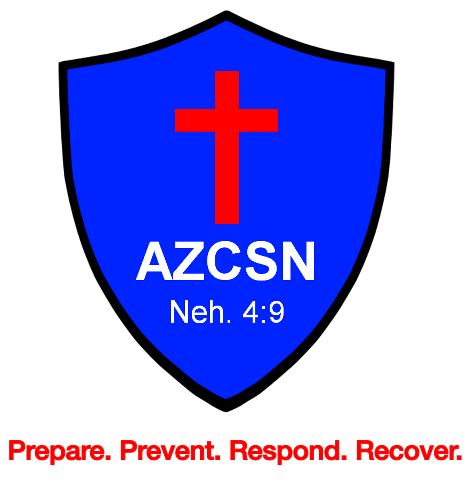AZCSN Conference-Naloxone (Narcan) Leave Behind Program
Increasing naloxone access has been identified as a primary strategy to reduce opioid overdose deaths. EMS systems have instituted public safety-based community naloxone training, distribution access points, and naloxone leave behind (NLB) programs, the latter of which allow emergency medical responders the ability to distribute "leave behind" naloxone kits on the scene of an overdose. These models present opportunities to expand naloxone access for individuals at high risk for future overdoses. NLB initiatives can potentially augment existing community-based naloxone training structures, thus widening the scope of the life-saving drug and reaching those most at risk of dying from an opioid overdose. Coupled with the importance of engaging an individual's family and social network when offering connections to treatment and recovery resources, NLB initiatives can significantly and positively impact our communities.
Presented by Bruce Whitney, MA, NREMT-P, TP-C, FP-C
.jpg) Bruce is presently the program director for Integrated Community Solutions to Active Violence Events (ICSAVE), an Arizona-based charitable foundation dedicated to traumatic event prevention and preparedness training. He is also the Pre-HospitalManager for Carondelet Health Network, responsible for the strategic direction, administration, training, certification, and regulatory oversight of nineteen public safety organizations, six hospitals and clinics.As one of the founding members of Arizona’sDisaster Medical Assistance Team (AZ DMAT-1), he presently serves as their organization’s Deputy Team Commander, responsible for the safety and security of a 12 to 35-person disaster response team.A passionate educator, Bruce has been actively teaching public safety and healthcare professionals, military personnel, and the community for over twenty-five years, and presently serves as adjunct faculty for Louisiana State University, the Department of Emergency and Military Affairs, and Pima Community College. Despite these various professional commitments, whenever possible he continues to serve his community in both a law enforcement and fire service reserve capacity.Recently retired from active-duty fire service, Bruce has served the greater Southern Arizona region for over twenty-six years. For seven of those years, he was a member of his Fire Department’s Special Operations Division, responsible for responding to all-hazard emergencies such as hazardous materials incidents, swift water, confined space, structural collapse, high, low angle, and rugged terrain rope rescues. Previous assignments included ten years with the Phoenix Police DepartmentReserve Bureau, where he was assigned to Patrol,Homeland Defense, Violent Crimes, and the Major Offenders Bureaus. Over the course of his career, he also worked as a Tactical Paramedic with the Pima Regional SWAT and EOD Response Teams, as a flight paramedic with Arizona LifeLine, and as a hospital-based paramedic with Tucson Medical Center. Finally, after more than twenty-eight years of active, guard and reserve military service, he retired after his last assignment located on Davis-Monthan Air Force Base. Bruce and his family presently reside in Southern Arizona.
Bruce is presently the program director for Integrated Community Solutions to Active Violence Events (ICSAVE), an Arizona-based charitable foundation dedicated to traumatic event prevention and preparedness training. He is also the Pre-HospitalManager for Carondelet Health Network, responsible for the strategic direction, administration, training, certification, and regulatory oversight of nineteen public safety organizations, six hospitals and clinics.As one of the founding members of Arizona’sDisaster Medical Assistance Team (AZ DMAT-1), he presently serves as their organization’s Deputy Team Commander, responsible for the safety and security of a 12 to 35-person disaster response team.A passionate educator, Bruce has been actively teaching public safety and healthcare professionals, military personnel, and the community for over twenty-five years, and presently serves as adjunct faculty for Louisiana State University, the Department of Emergency and Military Affairs, and Pima Community College. Despite these various professional commitments, whenever possible he continues to serve his community in both a law enforcement and fire service reserve capacity.Recently retired from active-duty fire service, Bruce has served the greater Southern Arizona region for over twenty-six years. For seven of those years, he was a member of his Fire Department’s Special Operations Division, responsible for responding to all-hazard emergencies such as hazardous materials incidents, swift water, confined space, structural collapse, high, low angle, and rugged terrain rope rescues. Previous assignments included ten years with the Phoenix Police DepartmentReserve Bureau, where he was assigned to Patrol,Homeland Defense, Violent Crimes, and the Major Offenders Bureaus. Over the course of his career, he also worked as a Tactical Paramedic with the Pima Regional SWAT and EOD Response Teams, as a flight paramedic with Arizona LifeLine, and as a hospital-based paramedic with Tucson Medical Center. Finally, after more than twenty-eight years of active, guard and reserve military service, he retired after his last assignment located on Davis-Monthan Air Force Base. Bruce and his family presently reside in Southern Arizona.
